Clancy Tucker's Blog, page 152
May 22, 2018
23 May 2018 - JOHN BROWNING
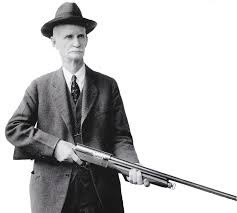
JOHN BROWNING
G'day folks,
John Moses Browning was an American firearms designer who developed many varieties of military and civilian firearms, cartridges, and gun mechanisms, many of which are still in use around the world. John Browning transformed the firearms industry with his innovative designs for sporting rifles, handguns and machine guns. Many of his creations remain in use after more than 100 years.
Who Was John Browning?
Born in Odgen, Utah, in 1855, John Browning learned the trade of gunmaking from his father. Beginning with his creation of what became the Winchester Model 1885 rifle, his innovations transformed the business, as he either invented or introduced new versions of repeating, automatic and high-capacity firearms that proved popular among both civilians and the military. Browning spent much of his later years in Belgium, where he forged a relationship with the firearms company FN Herstal, and died in that country in 1926.
Browning's Famous Gun Designs Winchester Model 1885
In 1879, Browning received his first patent, for a single-shot rifle. Four years later, he received a visit from T. G. Bennett, vice president and general manager of the Winchester Repeating Arms Company, marking the start of a 19-year collaboration between Browning and Winchester. His first patent became the basis for the Winchester 1885, reputed to have one of the strongest actions of the time.
Winchester Model 1894
In 1893, Browning presented Winchester with a lever-action rifle tailor-made for the new 30-30 smokeless cartridge. While not his first lever-action design, it became the standard bearer as a sporting rifle, with more than 7 million units sold.
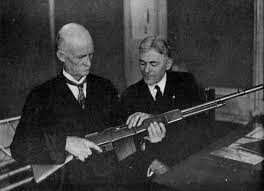
Winchester Model 1897
Browning introduced the first pump-action (or slide-action) shotgun in 1893, though it was unable to process the smokeless cartridges that were becoming popular. He made the adjustment for the Model 1897, which also featured the now standard "takedown" design that allows the barrel to be removed. The 1897 later proved a highly effective weapon for Allied forces during WWI.
Browning Auto-5
The Auto-5, which marked one of the first collaborations between Browning and Fabrique Nationale of Belgium, became the first successfully mass-produced semi-automatic shotgun in the early 20th century. It was based on a Browning patent in which the barrel and bolt recoil together following a shot, with the bolt remaining behind to eject the spent shell before moving forward to chamber a new one.
M1911 Also known by other names, including the Colt 45, the M1911 is a short-recoil, single-action hammer-fired pistol. It served as the U.S. military’s standard sidearm from 1911 until 1985, while proving immensely popular among civilians, as well.
B25
Introduced by FN Herstal in 1925, the B25 was the world's first over/under shotgun. Browning was working on an improved over/under prototype when he passed away the following year, his design eventually leading to the production of the Browning Superposed.
Military Weapons Along with his popular rifles for sporting and personal use, Browning developed high-capacity weaponry for military combat. One of his first creations for such use, the gas-operated machine gun M1895, surfaced in the Spanish-American War of 1898 and China's Boxer Rebellion shortly afterward.
The M1918 Browning Automatic Rifle appeared toward the end of WWI, its variations receiving more extensive use during WWII and the Korean War. Additionally, the M1919 Browning, a short-recoil-operated machine gun, featured prominently in WWII, Korea and Vietnam.
Browning's designs were also used to create the M2 Browning, or "Ma Deuce," an 80-plus-pound air-cooled machine gun. While not produced until the 1930s, after Browning's death, it became one of his most renowned military contributions, figuring into numerous major global conflicts in the decades that followed.

Early Years and Interest in Guns
John Moses Browning was born on January 23, 1855, in Ogden, Utah. His father, Jonathan, was a businessman, civil servant and gunsmith, the latter activity capturing the attention of his children.
Spending most of his time in his father's gun shop, John Browning cobbled together his first gun at age 10 from spare parts. He attended school until around age 15, when the head instructor, who recognized the boy's primary interest, told him not to bother coming back.
Browning Arms and FN Herstal In 1880, Browning and his brothers opened the early version of the Browning Arms Company, then known as J.M. Browning and Bro. Guns, Pistols, Amunition & Fishing Tackle, in Ogden, Utah. Following his early collaborations with the Connecticut-based Winchester Repeating Arms, Browning expanded his business overseas in 1897 by authorizing Fabrique Nationale of Herstal, Belgium, to manufacture a 32-caliber semi-automatic pistol.
In early 1902, Browning embarked on the first of approximately 60 voyages to Belgium, marking the transition to the European country as a base of operations. In 1977, FN Herstal purchased Browning Arms outright, and today the company's firearms are generally produced in Belgium, Portugal, Japan and the U.S.
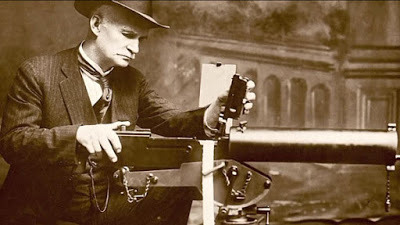
Family and Personal In 1879, Browning married Rachel Teresa Child, with whom he would have 10 children. His son Val later took over the family business.
A devout Mormon, Browning spent the late 1880s fulfilling his missionary service. Otherwise, he remained almost singularly devoted to his craft. Despite not being extensively schooled, he was known to be highly intelligent, even learning French so as to be able to converse with factory workers in Belgium.
In 1914, King Albert of Belgium presented Browning with the Cross of Knighthood of the Order of Leopold for his contributions to the city's firearms industry.
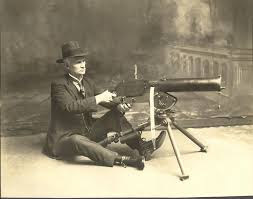
Death and Legacy
On November 26, 1926, John Browning died of heart failure in Liège, Belgium, reportedly while hard at work on one of his guns. Over the course of his life, he designed more than 80 military and sporting arms, racking up 100-plus patents along the way.
Browning's innovations fueled the creation of many firearms associated with the American West, with Colt, Remington and Savage joining Winchester as companies that manufactured models based on his designs. Regular production of his most popular guns endured for decades, with many remaining available for purchase today.
In 1952, a life-size memorial plaque was dedicated to Browning in Liège. In 1964, a photographic collection of his firearms was compiled for the first edition of his seminal biography, John M. Browning: American Gunmaker.
Enthusiasts can also see some of the legendary gunmaker's original models at the John M. Browning Firearms Museum, located in his birthtown at Ogden Union Station in Utah.

Clancy's comment: Mm ... Obviously a clever man, and he'd probably be the Patron Saint of the NRA.
I'm ...


Published on May 22, 2018 15:49
May 21, 2018
22 May 2018 - THE GALLIPOLI CAMPAIGN
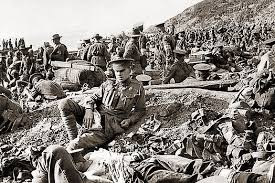
THE GALLIPOLI CAMPAIGN
G'day folks,
The Gallipoli peninsula is located in the southern part of East Thrace, the European part of Turkey, with the Aegean Sea to the west and the Dardanelles strait to the east. It is also where thousands of soldiers died.
The Gallipoli Campaign of 1915-16, also known as the Battle of Gallipoli or the Dardanelles Campaign, was an unsuccessful attempt by the Allied Powers to control the sea route from Europe to Russia during World War I. The campaign began with a failed naval attack by British and French ships on the Dardanelles Straits in February-March 1915 and continued with a major land invasion of the Gallipoli Peninsula on April 25, involving British and French troops as well as divisions of the Australian and New Zealand Army Corps (ANZAC). Lack of sufficient intelligence and knowledge of the terrain, along with a fierce Turkish resistance, hampered the success of the invasion. By mid-October, Allied forces had suffered heavy casualties and had made little headway from their initial landing sites. Evacuation began in December 1915, and was completed early the following January.

Launch of the Gallipoli Campaign
With World War I stalled on the Western Front by 1915, the Allied Powers were debating going on the offensive in another region of the conflict, rather than continuing with attacks in Belgium and France. Early that year, Russia’s Grand Duke Nicholas appealed to Britain for aid in confronting a Turkish invasion in the Caucasus. (The Ottoman Empirehad entered World War I on the side of the Central Powers, Germany and Austria-Hungary, by November 1914.) In response, the Allies decided to launch a naval expedition to seize the Dardanelles Straits, a narrow passage connecting the Aegean Sea to the Sea of Marmara in northwestern Turkey. If successful, capture of the straits would allow the Allies to link up with the Russians in the Black Sea, where they could work together to knock Turkey out of the war.
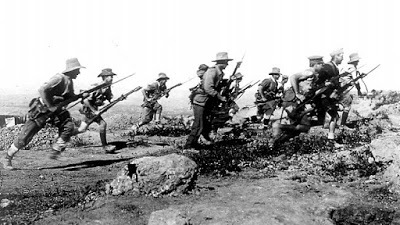
Spearheaded by the first lord of the British Admiralty, Winston Churchill (over the strong opposition of the First Sea Lord Admiral John Fisher, head of the British Navy), the naval attack on the Dardanelles began with a long-range bombardment by British and French battleships on February 19, 1915. Turkish forces abandoned their outer forts but met the approaching Allied minesweepers with heavy fire, stalling the advance. Under tremendous pressure to renew the attack, Admiral Sackville Carden, the British naval commander in the region, suffered a nervous collapse and was replaced by Vice-Admiral Sir John de Robeck. On March 18, 18 Allied battleships entered the straits; Turkish fire, including undetected mines, sank three of the ships and severely damaged three others.
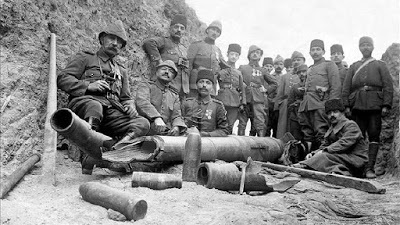
Gallipoli Land Invasion Begins
In the wake of the failed naval attack, preparations began for largescale troop landings on the Gallipoli Peninsula. British War Secretary Lord Kitchener appointed General Ian Hamilton as commander of British forces for the operation; under his command, troops from Australia, New Zealand and the French colonies assembled with British forces on the Greek island of Lemnos. Meanwhile, the Turks boosted their defenses under the command of the German general Liman von Sanders, who began positioning Ottoman troops along the shore where he expected the landings would take place. On April 25, 1915, the Allies launched their invasion of the Gallipoli Peninsula. Despite suffering heavy casualties, they managed to establish two beachheads: at Helles on the peninsula’s southern tip, and at Gaba Tepe on the Aegean coast. (The latter site was later dubbed Anzac Cove, in honor of the Australian and New Zealand troops who fought so valiantly against determined Turkish defenders to establish the beachhead there.)
After the initial landing, the Allies were able to make little progress from their initial landing sites, even as the Turks gathered more and more troops on the peninsula from both the Palestine and Caucasus fronts. In an attempt to break the stalemate, the Allies made another major troop landing on August 6 at Sulva Bay, combined with a northwards advance from Anzac Cove towards the heights at Sari Bair and a diversionary action at Helles. The surprise landings at Sulva Bay proceeded against little opposition, but Allied indecision and delay stalled their progress in all three locations, allowing Ottoman reinforcements to arrive and shore up their defences.
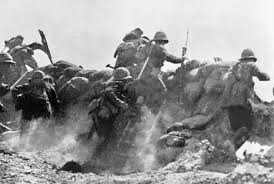
Decision to Evacuate Gallipoli
With Allied casualties in the Gallipoli Campaign mounting, Hamilton (with Churchill’s support) petitioned Kitchener for 95,000 reinforcements; the war secretary offered barely a quarter of that number. In mid-October, Hamilton argued that a proposed evacuation of the peninsula would cost up to 50 percent casualties; British authorities subsequently recalled him and installed Sir Charles Monro in his place. By early November, Kitchener had visited the region himself and agreed with Monro’s recommendation that the remaining 105,000 Allied troops should be evacuated.

The British government authorized the evacuation to begin from Sulva Bay on December 7; the last troops left Helles on January 9, 1916. In all, some 480,000 Allied forces took part in the Gallipoli Campaign, at a cost of more than 250,000 casualties, including some 46,000 dead. On the Turkish side, the campaign also cost an estimated 250,000 casualties, with 65,000 killed.

Clancy's comment: The futility of war.
I'm ...

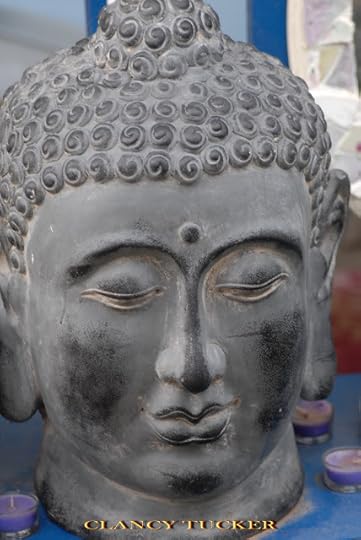
Published on May 21, 2018 18:25
May 20, 2018
21 May 2018 - JOYCELYN ELDERS
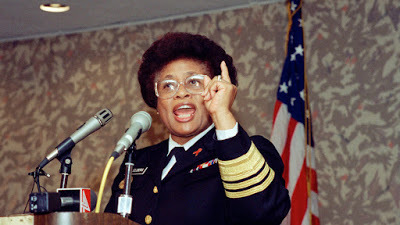
JOYCELYN ELDERS
G'day folks,
Welcome to some background on another high achiever. Joycelyn Elders became the first African-American United States Surgeon General in 1993 and only the second woman to hold the position.
Who Is Joycelyn Elders?
Joycelyn Elders was born on August 13, 1933 in Schaal, Arkansas. She was the daughter of sharecroppers but despite growing up in poverty, she graduated as valedictorian of her high school class and became the first in her family to attend college, the first person in the state of Arkansas to become board certified in pediatric endocrinology, and the first African-American public health administrator. In 1993, she became the 15th United States Surgeon General, making her the first African American and only the second woman to hold the position. Her controversial opinions about sexual health, including her U.N. conference statements regarding masturbation, caused great controversy, and ultimately led to her forced resignation. Elders is currently a professor emerita of pediatrics at the University of Arkansas School of Medicine and participates in numerous public speaking events promoting the legalization of marijuana and improvements to sexual education and public health.

Husband and Family
While obtaining her medical degree from the University of Arkansas and giving physical examinations to the local high school basketball team, she met her husband, Oliver Elders, who was the basketball coach. Within two months, the couple married in 1960. They have two sons, Eric, born in 1963, and Kevin, born in 1965.

Accomplishments First African-American U.S. Surgeon General
In September 1993, then-president Bill Clinton appointed Elders as the 15th United States Surgeon General, making her the first African American and only the second woman (following Antonia Novello) to hold the position. During her brief time as U.S. Surgeon General, she continued her open, frank, and often controversial crusades for improving sexual health education. Elders also helped develop the Office of Adolescent Health, which is now part of the Department of Health and Human Services. She advocated for increased access to health care and assistance for drug and alcohol abuse to her list of major concerns as well as the legalization of marijuana and other drugs. On these fronts and others, Elders was ahead of the curve on many public health issues that we have seen come to fruition today.
At a 1994 United Nations Conference, her controversial statement about masturbation as “a part of something that perhaps should be taught” to prevent the spread of HIV and AIDS among teens led to her forced resignation. After serving only 15 months as U.S. Surgeon General, Elders resigned in December 1994.

Lifelong Activism in Sex, Drugs, and Healthcare
During her early work as a physician and pediatric endocrinologist, Elders was treating adolescents with juvenile diabetes when she began to take notice of the extreme dangers of early pregnancy for diabetic girls. Elders then began teaching her young patients about the importance pregnancy prevention, providing them with birth control and condoms. Throughout the next several decades, she published well over a hundred papers related to juvenile diabetes and sexual behavior and dedicated her life to public health and access to sexual education.
In 1987, then-governor Bill Clinton appointed Elders as Director of the Arkansas Department of Health, making her the first African-American woman to hold this position. Always an advocate for adolescent health and responsible decision-making, Elders was branded a “rabble rouser” by president of the Arkansas Medical Society due to her controversial opinions on sexual education and birth control. She was even given the nickname the “condom queen” because she kept a “condom tree” on her government desk. During her time in office, she successfully reduced teen pregnancy, expanded the availability of HIV services, and worked hard to promote sex education. In 1992, she was elected President of the Association of State and Territorial Health Officers and a year later, appointed as U.S. Surgeon General.

Awards
Elders is the recipient of numerous awards including the Woman of Distinction Award from Worthen Bank, the Arkansas Democrat’s Woman of the Year, the National Governor’s Association Distinguished Service Award, the American Medical Association’s Dr. Nathan Davis Award, the De Lee Humanitarian Award, the National Coalition of 100 Black Women’s Candace Award for Health Science, and the Career Development Award from the National Institute of Health. Elders was also featured in the Changing the Face of Medicineexhibition, which honors the lives and accomplishments of women in medicine, and is featured in the Arkansas Women’s Hall of Fame.
In 2016, the “Joycelyn Elders Clinic” was launched by Brighter Brains Institute, a USA nonprofit, to serve students attending Garama Humanist Secondary School in the village of Kisinga, in western Uganda. In the spirit of Dr. Elders’ work, the Clinic offers sex education classes, free male and female condoms, free AFRIpads (washable, reusable sanitary pads that last for one year), and medicine for common diseases (malaria, parasitic worms, peptic ulcer disease, infections, etc.).
Elders currently participates in numerous public speaking events promoting the legalization of marijuana and improvements to sexual education and public health. Elders is also active in fight for racial equality in medicine.
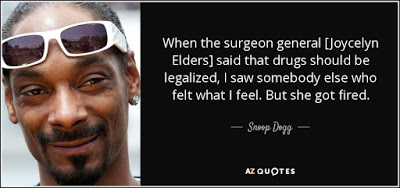
Education Elders was the first in her family to attend college and she did so at age 15 on an earned four-year scholarship with assistance from her brothers and sisters who picked extra cotton to help pay the $3.83 bus fare she needed to get to school every day. In 1952, she received a B.S. in Biology from Philander Smith College in Little Rock, Arkansas. Her original plan was to become a lab technician but after hearing a speech by Edith Irby Jones, the first African-American student at the University of Arkansas School of Medicine, Elders — who hadn’t even seen a doctor until she went to college — decided she wanted to become a physician “to improve the lives of children.”
Elders went on to work briefly as a nurse’s aide at a Veterans Administration hospital in Milwaukee and then joined the U.S. Army’s Women's Medical Specialist Corps in 1953.
She was the only African-American person in her class at Brooke Army Medical Center at Fort Sam Houston in San Antonio, Texas. She was stationed at Letterman Army Hospital in San Francisco, treating wounded soldiers returning home from the Korean War. In April 1954, Elders was licensed as a physical therapist and transferred to Fitzsimmons Hospital in Denver where she treated President Dwight D. Eisenhower after his 1955 heart attack.
Discharged from the U.S. Army in 1956, Elders went on to attend the University of Arkansas Medical School with assistance from the G.I. Bill. As 1 of 3 African Americans at the time of her entry into medical school, Elders was not allowed to eat in the “whites only” cafeteria. Despite the systematic racism she experienced, Elders obtained her M.D. in 1960 and M.S. in Biochemistry in 1967. In 1978, Elders became the first person in the state of Arkansas to receive board certification as a pediatric endocrinologist. Dr. Elders graduated from the University of Arkansas Medical School and then became its first African-American resident, its first African-American chief resident, and finally its first African-American professor. Elders worked at the University of Arkansas School of Medicine as an assistant, associate, and full professor of pediatrics from the 1960s to 1987 and later returned as a professor emerita.

Early Life
Elders was born Minnie Lee Jones on August 13, 1933 in Schaal, Arkansas. She was the daughter of sharecroppers, Haller Reed and Curtis Jones and the eldest of eight children. The family lived in poverty, sometimes without plumbing and electricity. Throughout her childhood, she and her siblings worked the cotton fields with their parents and helped with other farming tasks.
Even so, education was important to her family. One of Elders' earliest memories is being taught to read by her mother, who had an eighth grade education, which was quite extraordinary for an African-American woman at that time. Elders first attended Bright Star Elementary, a segregated one-room school 13 miles from her home. A gifted child, Elders later transferred to Howard County Training School in Tollette, Arkansas and graduated as its valedictorian at age 15, earning her a full tuition scholarship. She changed her name to Minnie Joycelyn Lee in college and but later stopped using the name “Minnie,” which was her grandmother’s name.

Clancy's comment: This lady sure made some great comments, and she was not scared to speak out on important issues. Good for her!
I'm ...


Published on May 20, 2018 19:13
May 19, 2018
20 May 2018 - SOME INTERESTING FACTS ABOUT GRASSHOPPERS
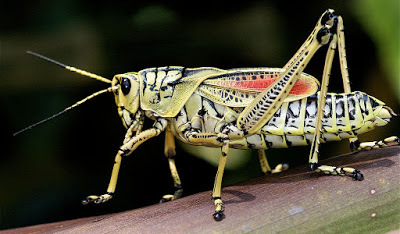
SOME INTERESTING
FACTS ABOUT GRASSHOPPERS
G'day folks,
Welcome to some facts about the best bait I've ever used to catch trout.
The grasshopper is a medium to large sized insectand the grasshopper is found (close to grass) all over the world. Grasshoppers are best known for their ability to jump incredible heights and distances.
Most grasshopper individuals grow to about 2 inches long although larger grasshoppers are found on a fairly regular basis that grow to more than 5 inches in length. The grasshopper has wings meaning it can migrate over long distances when the weather gets too cold.

There are 11,000 thousand known speciesof grasshopper on Earth, that live in grassy areas such as fields and meadows and forest and woodland. Like all insects, all speciesof grasshopper have a three-part body that is made up of the grasshopper's head, it's thorax and the abdomen. Grasshoppers also have six legs, two pairs of wings, and two antennae.

The antennae of the grasshopper are known to be remarkably long and can often be longer than the grasshopper's body, although the grasshopper's antennae and the grasshopper's body are normally about the same size. Grasshoppers use their long antennae in orderto make sense of their surroundings.
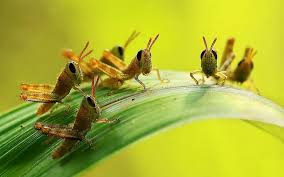
Grasshoppers have six jointed legs that are incredibly powerful for such a small creature, as grasshoppers are able to jump extraordinary distances. The two back legs of the grasshopper are long and powerful and are just for jumping, where the four front legs of the grasshopper are primarily used to hold onto preyand to help it to walk.
Despite their large size, grasshoppers are herbivoresanimalsand have a dietthat consists solely of plant matter. Grasshoppers eat grasses, weeds, leaves, shrubs, bark and numerous other speciesof plants that surround them.
The grasshopper is also a stable food source for many predatorsaround the world including reptiles, insects, small mammalsand birds. It is common for humansto eat grasshoppers in places like Asiaand Africawhere the bigger speciesof grasshopper are found, and there is a less readily available alternative protein source.

The female grasshopper lays an egg pod that contains a couple of dozen grasshopper eggs in the late autumn to early winter depending on the area. The female grasshopper inserts her egg pod into the soil so that it is a couple of inches underground. The grasshopper eggs can take up to 9 months to hatch as they wait until the weather has warmed before breaking into the outside world.
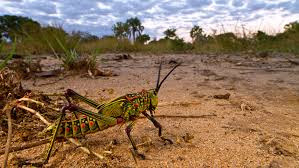
When the first baby grasshopper (known as a nymph) hatches out of it's egg, it tunnels through the soil and up to the surface, and the remaining grasshopper nymphfollow. As they get older, the grasshoppers will increase in sizeuntil they are adults. The grasshopper only remains in this stage (young and adult) for a few months before it dies meaning that most grasshopper individuals spend the majority of their lives inside an egg.

Clancy's comment: And, if you are in South East Asia, they taste good too.
I'm ...

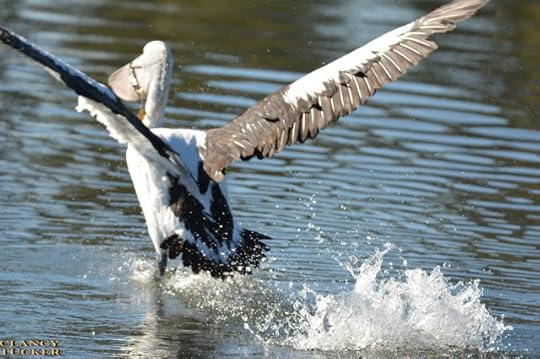
Published on May 19, 2018 17:11
May 18, 2018
19 May 2018 - QUOTES WORTH READING

QUOTES WORTH READING
G'day folks,
Welcome to some great quotes.










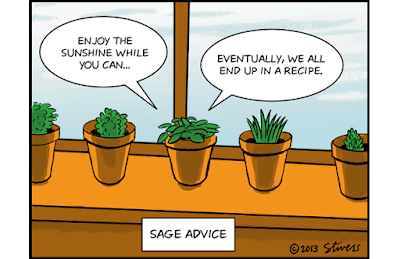


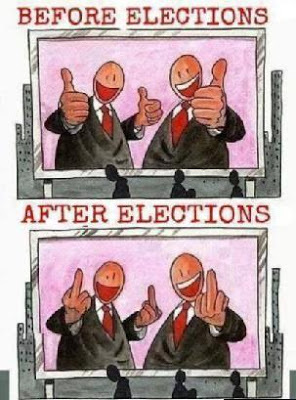






Clancy's comment: Yep, some top quotes here today.
I'm ...
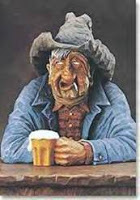

Published on May 18, 2018 16:22
May 17, 2018
18 May 2018 - A FILTHY RICH DINING EXPERIENCE

A FILTHY RICH DINING EXPERIENCE
G'day folks,
Russian diamond company World of Diamonds has teamed up with Singapore restaurant Ce’ La Vi to offer a lucky couple the world’s most expensive dining experience, for the decadent price of $2 million. It probably doesn’t seem that way, but it’s actually a bargain!
World of Diamonds recently unveiled a 2.08 carat blue diamond ring with a rose-gold plated platinum band that they named after actress Jane Seymour. It has received interest from a number of parties, including a royal family, but instead of simply auctioning it off to the highest bidder, the Russian company decided to make acquiring the stunning piece of jewelry a truly special event. A rich couple will get to take part in an 8-hour dining experience described as the most expensive in the world, at the end of which they will be handed the Jane Seymour diamond ring.
“This is the most expensive dining experience in the world, and the most lavish one possible,” Karan Tilani, Director of World of Diamonds Group, said. “As a diamond mining group, we recognize that Ce’ La Vi is a diamond in the sky. [We expect] the response will be beyond overwhelming, but it’s only two diners who will eventually have the privilege.”
The event will start off with a 45-minute helicopter ride over Singapore, followed by a short time spent on a luxury cruise. The lucky couple will then be picked up by chauffeur-driven Rolls-Royce and taken to the Ce’ La Vi restaurant, on the rooftop of the Marina Bay Sands Hotel, where 10,000 fresh roses will be waiting for them. Here they will be able to enjoy a 360-degree view of the city at sunset, as well as an 18-course Modern Asian meal.
Among the expensive culinary items on menu, a World of Diamonds press release mentions fresh Belon oysters with champagne foam, Almas caviar – supposedly the most expensive variety – lamb sweetbread, air-flown Alaska wild salmon, slow cooked pigeon, and apple-wood grilled Mishima sirloin. Paired with these scrumptious dishes will be 44- and 55-year-old vintage wines and a variety of world-class champagnes and bruts.
The two diners will be seated on custom-made designer furniture made by The Plush and will be able to eat their food using diamond-studded chopsticks with their names engraved on them. At midnight, they will be presented with the coveted blue diamond ring.
The Jane Seymour is the world’s only jewelry creation named after the award-wining Hollywood actress that isn’t pre-owned. Considering this and the fact that diamonds this blue have been known to be auctioned at over $2 million, the world’s most expensive dinner is actually quite a bargain.
But getting possession of the ring and enjoying this unique experience isn’t as easy as handing over $2 million. World of Diamonds and Ce’ La Vi have yet to announce the exact criteria by which the lucky couple will be selected, but they did mention that it will have a lot to do with the buyer’s status (just how influential he/she is), the buyer’s affinity for blue diamonds, and how he or she plans to flaunt/display piece of jewelry.
“Also, because WOD Group supplies to luxury design houses and reputable diamond jewelers, we may have to offer our existing clients priority for The Jane Seymour ring, and therefore, priority over the dining experience,” Karan Tilani told Forbes. “However, we still welcome additional interest globally.”
So unless you’re rich AND powerful, have at least another blue diamond and are already a current client of World of Diamonds, you probably won’t make the cut. Sorry, but hey, there’s always Red Lobster, right?

Clancy's comment: Man, what will they dream up next?
I'm ...


Published on May 17, 2018 15:06
May 16, 2018
17 May 2018 - Dr. ANGELA DAVIS - EDUCATOR AND ACTIVIST
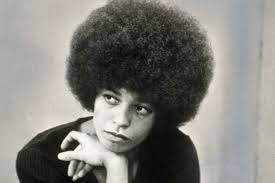
Dr. ANGELA DAVIS - EDUCATOR AND ACTIVIST -
G'day folks,
Educator and activist Angela Davis (1944-) became known for her involvement in a politically charged murder case in the early 1970s.
Influenced by her segregated upbringing in Birmingham, Alabama, Davis joined the Black Panthers and an all-black branch of the Communist Party as a young woman. She became a professor at UCLA, but fell out of favor with the administration due to her ties. Davis was charged with aiding the botched escape attempt of imprisoned black radical George Jackson, and served roughly 18 months in jail before her acquittal in 1972. After spending time traveling and lecturing, Davis returned to the classroom as a professor and authored several books.
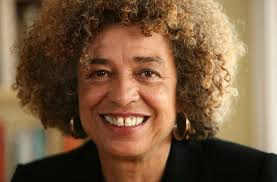
Born on January 26, 1944, in Birmingham, Alabama. Angela Davis is best known as a radical African American educator and activist for civil rights and other social issues. She knew about racial prejudice from her experiences with discrimination growing up in Alabama. As a teenager, Davis organized interracial study groups, which were broken up by the police. She also knew several of the young African American girls killed in the Birmingham church bombing of 1963.
Angela Davis later moved north and went to Brandeis University in Massachusetts where she studied philosophy with Herbert Marcuse. As a graduate student at the University of California, San Diego, in the late 1960s, she joined several groups, including the Black Panthers. But she spent most of her time working with the Che-Lumumba Club, which was all-black branch of the Communist Party.
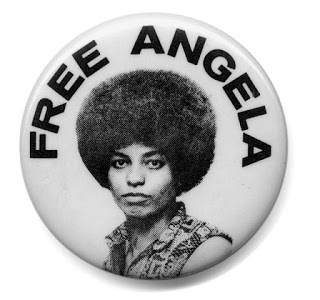
Hired to teach at the University of California, Los Angeles, Angela Davis ran into trouble with the school’s administration because of her association with communism. They fired her, but she fought them in court and got her job back. Davis still ended up leaving when her contract expired in 1970.
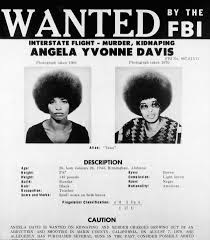
Outside of academia, Angela Davis had become a strong supporter of three prison inmates of Soledad Prison known as the Soledad brothers (they were not related). These three men—John W. Cluchette, Fleeta Drumgo, and George Lester Jackson—were accused of killing a prison guard after several African American inmates had been killed in a fight by another guard. Some thought these prisoners were being used as scapegoats because of the political work within the prison.
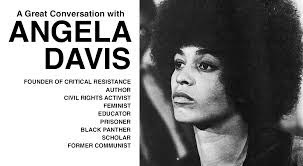
During Jackson’s trial in August 1970, an escape attempt was made and several people in the courtroom were killed. Angela Davis was brought up on several charges, including murder, for her alleged part in the event. There were two main pieces of evidence used at trial: the guns used were registered to her, and she was reportedly in love with Jackson. After spending roughly 18 months in jail, Davis was acquitted in June 1972.
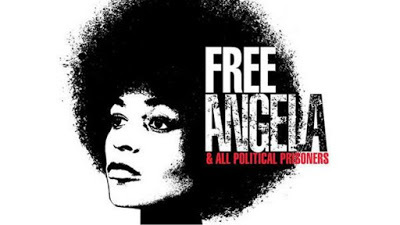
After spending time traveling and lecturing, Angela Davis returned to teaching. Today, she is a professor at the University of California, Santa Cruz, where she teaches courses on the history of consciousness. Davis is the author of several books, including Women, Race, and Class (1980) and Are Prisons Obsolete? (2003).

Clancy's comment: I always have great admiration for those who speak up, and out, about important social issues. Why, because there are many issues that need to be dealt with, and there are countless people who do absolutely nothing - not even move their lips. Circumstances never change unless people with an honourable conscience stand up and bark.
I'm ...
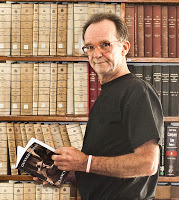
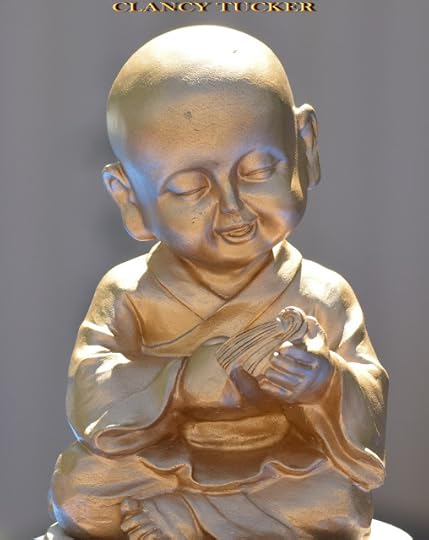
Published on May 16, 2018 15:45
May 15, 2018
16 May 2018 - TIPS FOR EMERGING AUTHORS
TIPS FOR EMERGING AUTHORS
G'day folks,
I may have posted these before but they are worth re-reading.
“Advice to young writers who want to get ahead without any annoying delays: don’t write about Man, write about a man.” ― E.B. White
“Write. Start writing today. Start writing right now. Don’t write it right, just write it –and then make it right later. Give yourself the mental freedom to enjoy the process, because the process of writing is a long one. Be wary of “writing rules” and advice. Do it your way.” ― Tara Moss
“Notice how many of the Olympic athletes effusively thanked their mothers for their success? “She drove me to my practice at four in the morning,” etc. Writing is not figure skating or skiing. Your mother will not make you a writer. My advice to any young person who wants to write is: leave home.” ― Paul Theroux
“It’s a great lesson about not being too precious about your writing. You have to try your hardest to be at the top of your game and improve every joke you can until the last possible second, and then you have to let it go. You can’t be that kid standing at the top of the waterslide, overthinking it…You have to let people see what you wrote.” ― Tina Fey
“Be daring, take on anything. Don’t labor over little cameo works in which every word is to be perfect. Technique holds a reader from sentence to sentence, but only content will stay in his mind.” ― Joyce Carol Oates
“To all the talented young men who wander about feeling that there is nothing in the world for them to do, I should say: ‘Give up trying to write, and, instead, try not to write. Go out into the world; become a pirate, a king in Borneo, a labourer in Soviet Russia; give yourself an existence in which the satisfaction of elementary physical needs will occupy almost all your energies.’ I do not recommend this course of action to everyone, but only to those who suffer from the disease which Mr Krutch diagnoses. I believe that, after some years of such an existence, the ex-intellectual will find that in spite of is efforts he can no longer refrain from writing, and when this time comes his writing will not seem to him futile.” ― Bertrand Russell
“Writing a book is a bit like surfing . . . Most of the time you’re waiting. And it’s quite pleasant, sitting in the water waiting. But you are expecting that the result of a storm over the horizon, in another time zone, usually, days old, will radiate out in the form of waves. And eventually, when they show up, you turn around and ride that energy to the shore. It’s a lovely thing, feeling that momentum. If you’re lucky, it’s also about grace. As a writer, you roll up to the desk every day, and then you sit there, waiting, in the hope that something will come over the horizon. And then you turn around and ride it, in the form of a story.” ― Tim Winton
“My advice for aspiring writers is go to New York. And if you can’t go to New York, go to the place that represents New York to you, where the standards for writing are high, there are other people who share your dreams, and where you can talk, talk, talk about your interests. Writing books begins in talking about it, like most human projects, and in being close to those who have already done what you propose to do.” ― Walter Kirn
“If you want to write, if you want to create, you must be the most sublime fool that God ever turned out and sent rambling. You must write every single day of your life. You must read dreadful dumb books and glorious books, and let them wrestle in beautiful fights inside your head, vulgar one moment, brilliant the next. You must lurk in libraries and climb the stacks like ladders to sniff books like perfumes and wear books like hats upon your crazy heads. I wish you a wrestling match with your Creative Muse that will last a lifetime. I wish craziness and foolishness and madness upon you. May you live with hysteria, and out of it make fine stories — science fiction or otherwise. Which finally means, may you be in love every day for the next 20,000 days. And out of that love, remake a world.” ― Ray Bradbury
“Whenever I’m asked what advice I have for young writers, I always say that the first thing is to read, and to read a lot. The second thing is to write. And the third thing, which I think is absolutely vital, is to tell stories and listen closely to the stories you’re being told.” ― John Green
“Imagine that you are dying. If you had a terminal disease would you finish this book? Why not? The thing that annoys this 10-weeks-to-live self is the thing that is wrong with the book. So change it. Stop arguing with yourself. Change it. See? Easy. And no one had to die.” ― Anne Enright
“On writing, my advice is the same to all. If you want to be a writer, write. Write and write and write. If you stop, start again. Save everything that you write. If you feel blocked, write through it until you feel your creative juices flowing again. Write. Writing is what makes a writer, nothing more and nothing less. — Ignore critics. Critics are a dime a dozen. Anybody can be a critic. Writers are priceless. —- Go where the pleasure is in your writing. Go where the pain is. Write the book you would like to read. Write the book you have been trying to find but have not found. But write. And remember, there are no rules for our profession. Ignore rules. Ignore what I say here if it doesn’t help you. Do it your own way. — Every writer knows fear and discouragement. Just write. — The world is crying for new writing. It is crying for fresh and original voices and new characters and new stories. If you won’t write the classics of tomorrow, well, we will not have any. Good luck.” ― Anne Rice

Clancy's comment: Yep, don't worry about what others say, just do it, and maintain your own voice. Your writing voice is a part of your DNA.
I'm ...


Published on May 15, 2018 14:43
May 14, 2018
15 May 2018 - GLOW WORMS

GLOW WORMS
G'day folks,
Welcome to some facts on a creature that stands out.
The glow worm is a medium to large sized invertebratethat is famous for having a green and yellow coloured light on the end of its tail.
Glow worms are found inhabiting dense woodland and caves around the world with the exception of the Americas and glow worms are one of the few insectsthat are found inside the colder Arctic Circle. Glow worms are nocturnalanimalswhich means that they are active during the dark night which is when their glowing rears can be seen.

Glow worm is the common name for various different groupsof insectlarvaand adult larviform females which glow through bioluminescence. Glow worms may sometimes resemble actual worms, but all are insectsas one speciesof glow worm is a typeof flybut most glow worms speciesare actually beetles.
It is only the female glow worms that actually glow as they spend around 2 hours every night in the mating season with their bottoms in the air, trying to attract a mate. The male glow worms are attracted to the glowing object in the foliage but have also been known to be attracted to man-made lighting such as street lights.
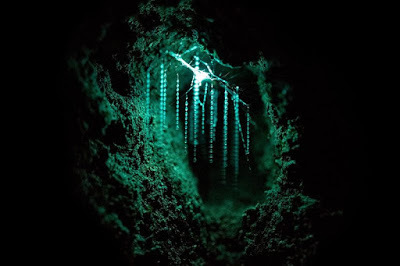
Glow worms are most commonly seen in the UK between June and October and their green-lit tails tend to show up most clearly when the sun goes down at dusk. Legend says that early humansused to use glow worms to mark paths and provide light in huts. Glow worms were thought to have some kind of magical power and so people would also use the glow worm in medicines.

Glow worms are omnivorous animalsbut they tend to have a very meat-based diet. Glow worms predominantly preyon snailsand slugs which make up the majority of the glow worm's diet. Glow worms also preyon other insectsand small invertebrates.
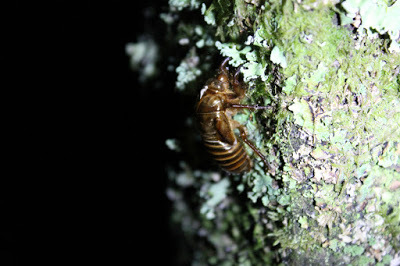
Due to their small sizeand the fact that they glow in the darkness, glow worms have numerous natural predatorswithin their environmentincluding spiders, large insects, birds, reptilesand centipedes.

Typically, the female glow worms lays between 50 and 100 eggs in moist areas, over a period of a few days. The tiny glow worm eggs are yellow in colourand can take between 3 and 6 weeks to hatch depending on the climate (the warmer it is, the faster the glow worm eggs will hatch).

Glow worms are considered to be an animalspeciesthat is threatenedwith extinction as the glow worm population numbers are drastically decreasing. The main reason for the lower number of glow worms is thought to be the expansion of humancivilisations. Glow worms are known to be particularly vulnerableto changes in their environmentincluding habitatloss, noise and pollution.

Clancy's comment: Amazing nature, eh?
I'm ...

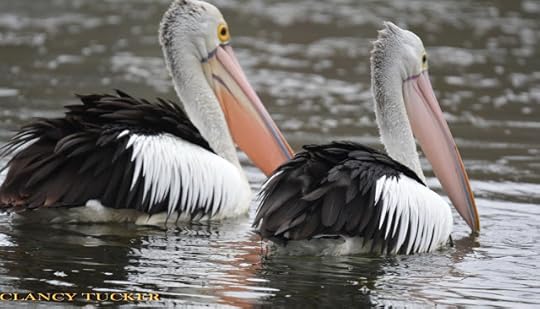
Published on May 14, 2018 14:52
May 13, 2018
14 May 2018 - EDWARD J. URBANOWSKI - GUEST AUTHOR

EDWARD J. URBANOWSKI - GUEST AUTHOR -
G'day folks,
Today, I interview a passionate man from the USA; a man with a great sense of humour.
Welcome, Edward ...
1. TELL US A LITTLE ABOUT YOURSELF AND YOUR WRITING JOURNEY.
My writing journey really started in the 1990s. I completed two screenplays but had no luck landing an agent. I worked on my screenplays while I worked full time and wrote freelance articles for a local newspaper. Life side-tracked me for a few years, as it does, I suppose, all of us. Through these times I never lost sight of my work. Things eventually settled down, to the degree any of us have lives we’d call settled. I resumed my work. My first book, “Man’s First Friend,” was inspired by my wife, Maureen. We have three dogs and I am a bit of freak with them. Then again, doesn’t everyone talk to their dogs and spoil them a bit? One morning she said “You’re too much with those dogs.” I channelled Ralph Kramden in my reply, “The Bible is wrong, God created the dog after Eve because she was mean to Adam.” That was the, pardon the pun, genesis for my first illustrated story.
2. WHEN AND HOW DID YOU BECOME A WRITER?
I think I really became a writer in 2014 when I self-published “Man’s First Friend.” I did a considerable amount of writing as far back as the 1990s but this was my first tangible work.
3. WHAT TYPE OF PREPARATION DO YOU DO FOR A MANUSCRIPT? DO YOU PLAN EVERYTHING FIRST OR JUST SHOOT FROM THE HIP?
When I get an idea I like to take pages and pages of handwritten notes. I just keep adding thoughts until the idea can be sustained. If it’s not ready I save the idea for the future. If it’s substantial enough I refer to Joseph Campbell’s “Hero’s Journey.” I break the story down to see if it fits the formula, to the degree it can. I don’t keep a checklist, I look for an overall plot. If I feel comfortable I do an outline. If I’m confident in the outline I just write away. I write whatever section inspires me until I fill in all the blanks.
4. WHAT DO YOU ENJOY MOST ABOUT BEING A WRITER?
Besides the finished product, I like when someone who’s read my work comes to me not only with positive feedback, for my insecurity, but also with an observation. I love it when they catch a subtlety or a message that wasn’t obvious.
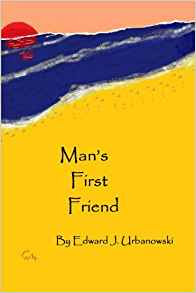
5. WHAT IS THE HARDEST THING ABOUT BEING A WRITER?
Rejection is discouraging. I’m up to the challenge of writing but marketing, or self-promotion, has been a bugger for me. I’ve had many agency rejections, the writer’s equivalent of battle scars. If I find a mass audience I know my work will appeal to a wide range of people but it’s getting there that’s difficult.
6. WHAT WERE YOU IN A PAST LIFE, BEFORE YOU BECAME A WRITER?
Whenever I go on a masted ship, for example, at a seaport, or restoration, I get an odd feeling, not only déjà vu but something more I can’t explain. If I lived before I was on such a ship.
7. WHAT IS YOUR GREATEST WRITING ACHIEVEMENT?
I think it was my first novel, “Debating Christ.” I took a short passage from the gospel of Luke and expanded it. I wanted to show a living, breathing, laughing, exuberant Christ. I imagine if you’d been to hell and back you’d be in a pretty good mood and would have a newfound appreciation for the littlest things. I wanted to ae the story accessible and by all accounts I succeeded.
8. WHAT ARE YOU WORKING ON AT THE MOMENT?
I’m doing a political fantasy inspired by current events. It’s a parable about hope and redemption that asks the question “What if?” Redemption is a theme in all of my works.
9. WHAT INSPIRES YOU?
I love a wide range of music but I have a special place in my heart for film music. Often I lean on this music to help me bring emotional gravitas to my writing. I often find inspiration comes when I lease expect it. It may be a soft breeze, a summer sunrise or a couple walking down the street holding hands. I think inspiration is there, we just have to look for it.
10. WHAT GENRE DO YOU WRITE?
My works have been faith oriented but my current project is a fantasy. I have three other ideas that are fantasy as well. I love fantasy, the freedom it brings and the endless possibilities.
11. DO YOU HAVE ANY TIPS FOR NEW WRITERS?
Keep writing, don’t be discouraged. When you think you’re finished, do another draft. Believe in yourself, there may be times you’re the only one who does.
12. DO YOU SUFFER FROM WRITER’S BLOCK?
On occasion I do. When that happens I take a day off and then force myself back. If I’m stuck on a project I’ll go to another one to clear my mind. That usually works.

13. DO YOU HAVE A PREFERRED WRITING SCHEDULE?
Coffee first, squat on the couch with my dogs and have at it. This is good for a few hours, if I have the time. I go back after our daily walk, late afternoon, for another hour or two. Morning and early evening seem to be magic times for me. If I ever succeed and can write full time that’s when I’ll do my thing.
14. DO YOU HAVE A FAVOURITE WRITING PLACE?
In the summer, the rocking chair on my front porch. The house faces a nice little park and my dogs bark at everyone so I’ve gotten to meet a lot of people. The couch beckons in the cold weather.
15. WHAT IS YOUR GREATEST JOY IN WRITING?
When inspiration hits, you know, the “A-Ha!” moment. When you’re in the middle of a story and you find some great little touch, or line, something you know the reader will appreciate.
WHO IS YOUR FAVOURITE AUTHOR AND WHY?
I love Mark Twain and have read “Huckleberry Finn” a number of times. He was a simple genius who was able to shine a bright light on our darkness. He taught at the same time he entertained.
16. WHAT’S THE GREATEST COMPLIMENT YOU EVER RECEIVED FROM A READER?
I gave my niece and her children my second book, “Sparks, The Firefly Who Saved Christmas,” in 2016. She said they read it that Christmas Eve and liked it so much they made her read it again. She said they’ve made it a tradition ever since. Young children are unfiltered, that can’t be topped.
17. WHAT WAS THE WORST COMMENT FROM A READER?
During the campaign I posted two of my political cartoons on Facebook. Someone said they were offensive. Then again, they weren’t complimentary.

18. WRITERS ARE SOMETIMES INFLUENCED BY THINGS THAT HAPPEN IN THEIR OWN LIVES. ARE YOU?
Absolutely, I’ve brought my joys, hurts and baggage to my work. Writing can be therapeutic.
19. OTHER THAN WRITING, WHAT ELSE DO YOU LOVE?
I love movies, music, being outdoors, when it isn’t freezing. I already mentioned my dogs.
20. DID YOU HAVE YOUR BOOK / BOOKS PROFESSIONALLY EDITED BEFORE PUBLICATION?
I didn’t, I just wrote the hell out of them until I felt they were as close to perfect as possible.
21. DESCRIBE YOUR PERFECT DAY.
Other than coffee, totally open.
22. IF YOU WERE STUCK ON A DESERT ISLAND WITH ONE PERSON, WHO WOULD IT BE? WHY?
My wife, God help her. That’s the price she pays. I figure if you marry someone you should be able to put up with one another under any circumstances.

23. WHAT WOULD YOU SAY IF YOU HAD THE CHANCE TO SPEAK TO WORLD LEADERS?
You’re in temp jobs, do your work, do it well.
24. WHAT ARE YOUR PLANS FOR THE FUTURE?
I’m going to launch a blog with a cartoon strip that’s been rejected by the syndicates. A shameless plug is below:
If I’m not an overnight success I have to find a job. I’ll keep writing and tooning.
25. WHAT ARE YOUR VIEWS ON BOOK TRAILERS? DO THEY SELL BOOKS?
I think they do, they reflect the culture we live in.
26. DO YOU SEE YOURSELF IN ANY OF YOUR CHARACTERS?
I do, I pity them. I give my characters my good and bad qualities. A professor once told me “Write what you know.” This is one interpretation.
27. DOES THE PUBLISHING INDUSTRY FRUSTRATE YOU?
Big time, but I realize there are so many writers out there and so much product, there’s only so much publishers can see.
28. DID YOU EVER THINK OF QUITTING?
On occasion, yes, it can be frustrating but quitting feels like a cheap way out.

29. WHAT WAS YOUR FAVOURITE MANUSCRIPT TO WRITE? WHY?
“Debating Christ,” because after the research and formatting the characters really came to life.
30. HOW WOULD YOU DEFINE ‘SUCCESS’ AS A WRITER?
Completion, the actual, tangible existence of my work.
31. WHAT SHOULD READERS WALK AWAY FROM YOUR BOOKS KNOWING? HOW SHOULD THEY FEEL?
There’s always hope and we’re never alone in our struggles, they should feel hopeful and optimistic.
32. WOULD YOU LIKE TO HAVE YOUR BOOKS MADE INTO MOVIES? EVER WRITTEN A SCREENPLAY?
All of my books would work well visually, with the right director and producer they could be outstanding. I’ve written several screenplays including a pilot that have potential.
33. HOW MUCH THOUGHT GOES INTO DESIGNING A BOOK COVER?
A great deal, it has to capture the spirit and essence of the story. I start thinking about a cover design during the early stages of writing. I don’t work on the cover until the book is ready and full blown. At that time I know what look I’m after for the cover.
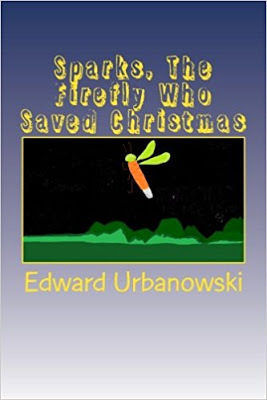
34. WHAT’S YOUR ULTIMATE DREAM?
Selling enough copies of my books to write full time. I have quite a few ideas but I need the time to develop them. I’m open to selling my pilot as well.
35. WRITING IS ONE THING. WHAT ABOUT MARKETING YOU, YOUR BOOKS AND YOUR BRAND? ANY THOUGHTS?
I’m stuck on this. I’ve gotten good feedback, even a rave review but the next steps elude me.
36. ARE YOUR BOOKS SELF-PUBLISHED?
They are.
37. DESCRIBE YOURSELF IN FIVE WORDS.
Too stubborn to give up.
38. WHAT PISSES YOU OFF MOST?
Lousy writing. If it’s published it should shine, that goes for television and movies, too.
39. WHAT IS THE TITLE OF THE LAST BOOK YOU READ? GOOD ONE?
“Last Words,” by George Carlin. We could use him today.

40. WHAT WOULD BE THE VERY LAST SENTENCE YOU’D WRITE?
Aaahhhhhhh! Just kidding.
I think, ‘To be continued elsewhere.’
41. WHAT WOULD MAKE YOU HAPPIER THAN YOU ARE NOW? CARE TO SHARE?
Financial success, of course, and maybe a more stable world.
42. ANYTHING YOU’D LIKE TO ADD?
I think I’ve gone on long enough, might be time to poke the readers and let them know we’re done. I’m on Facebook and Twitter if anyone has questions or feedback and my blog is on the way, assuming they didn’t hate the shameless promotion.
Thank you, Clancy, for your time and for inviting me.
Thanks to your readers for their time and best of luck!

BLOG
AMAZON

Clancy's comment: You are welcome, Edward. I am always happy to promote other authors, and I like your style. Good luck with book sales. Keep smiling.
I'm ...

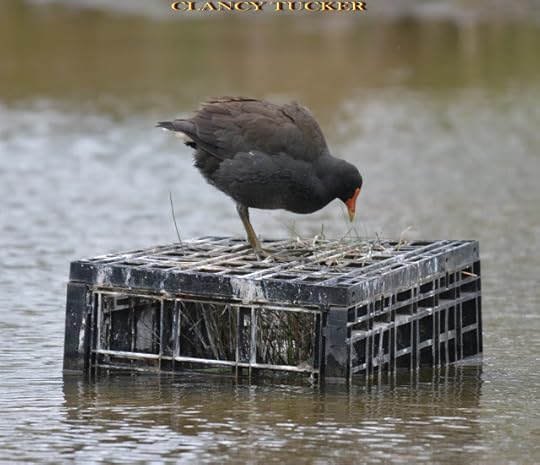
Published on May 13, 2018 19:30



